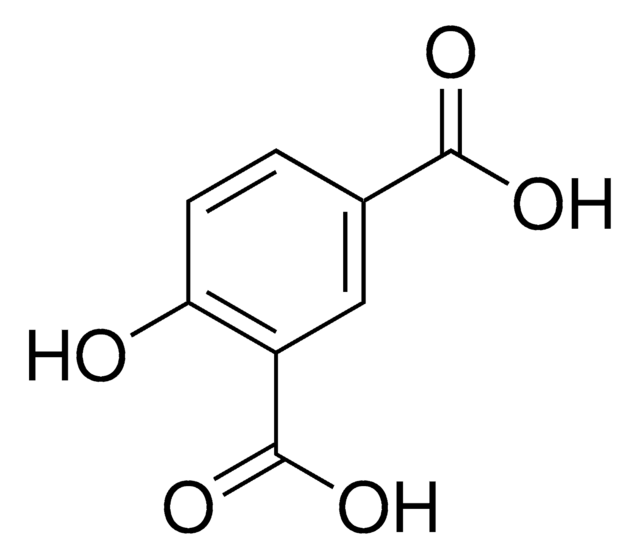S0200000
Salicylic acid
European Pharmacopoeia (EP) Reference Standard
Sinonimo/i:
2-Hydroxybenzoic acid
About This Item
Prodotti consigliati
Grado
pharmaceutical primary standard
Densità del vapore
4.8 (vs air)
Tensione di vapore
1 mmHg ( 114 °C)
Famiglia di API
salicylic acid
Produttore/marchio commerciale
EDQM
P. ebollizione
211 °C (lit.)
Punto di fusione
158-161 °C (lit.)
applicazioni
pharmaceutical (small molecule)
Formato
neat
Stringa SMILE
OC(=O)c1ccccc1O
InChI
1S/C7H6O3/c8-6-4-2-1-3-5(6)7(9)10/h1-4,8H,(H,9,10)
YGSDEFSMJLZEOE-UHFFFAOYSA-N
Cerchi prodotti simili? Visita Guida al confronto tra prodotti
Descrizione generale
Applicazioni
Confezionamento
Altre note
Prodotti correlati
Avvertenze
Danger
Indicazioni di pericolo
Consigli di prudenza
Classi di pericolo
Acute Tox. 4 Oral - Eye Dam. 1 - Repr. 2
Codice della classe di stoccaggio
13 - Non Combustible Solids
Classe di pericolosità dell'acqua (WGK)
WGK 1
Punto d’infiammabilità (°F)
314.6 °F - closed cup
Punto d’infiammabilità (°C)
157 °C - closed cup
Scegli una delle versioni più recenti:
Certificati d'analisi (COA)
It looks like we've run into a problem, but you can still download Certificates of Analysis from our Documenti section.
Se ti serve aiuto, non esitare a contattarci Servizio Clienti
Possiedi già questo prodotto?
I documenti relativi ai prodotti acquistati recentemente sono disponibili nell’Archivio dei documenti.
I clienti hanno visto anche
Il team dei nostri ricercatori vanta grande esperienza in tutte le aree della ricerca quali Life Science, scienza dei materiali, sintesi chimica, cromatografia, discipline analitiche, ecc..
Contatta l'Assistenza Tecnica.






